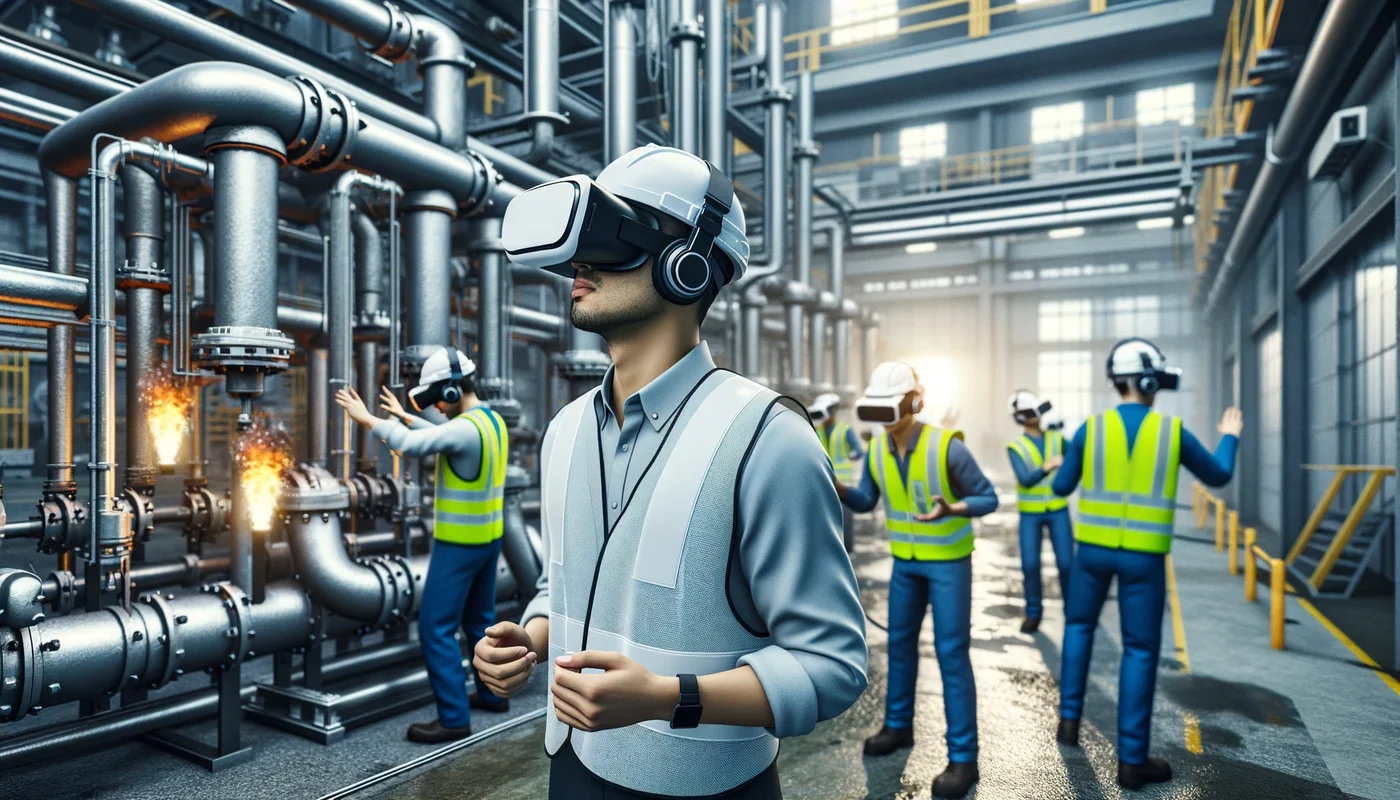
Creating a Future Workplace with AR and VR!
In today’s fast-paced world, it’s evident that technological advancements are driving rapid change. To stay ahead, businesses must embrace these innovations and integrate them into their workplaces. Augmented Reality (AR) and Virtual Reality (VR) are at the forefront of this transformation, offering exciting opportunities to create future-ready workplaces. This blog explores how AR and VR can revolutionize your workplace and help you outpace the competition.
Creating a Future Workplace with AR and VR!
“The advance of technology is based on making it fit in so that you don’t really even notice it, so it’s part of everyday life.”
– Bill Gates, Co-founder of Microsoft
In today’s fast-paced world, it’s evident that technological advancements are driving rapid change. To stay ahead, businesses must embrace these innovations and integrate them into their workplaces. Augmented Reality (AR) and Virtual Reality (VR) are at the forefront of this transformation, offering exciting opportunities to create future-ready workplaces. This blog explores how AR and VR can revolutionize your workplace and help you outpace the competition.
Reality in Its Many Forms
Among the most exciting and rapidly evolving technologies are Virtual Reality (VR) and Augmented Reality (AR). While some companies have already adopted these technologies to create innovative and sustainable workplaces, it’s essential for every business to invest in AR and VR to thrive in today’s competitive landscape.
Recent studies by PwC reveal that VR-trained employees are up to four times more focused and four times faster to train compared to e-learning peers. By incorporating AR and VR into your workplace, you can significantly boost employee productivity and engagement.
Over the years, AR and VR have become more accessible, both technologically and financially, making them viable for businesses and educational institutions alike. These technologies bridge the gap between the digital and physical worlds, transforming industries and redefining how we work and learn.

Understanding AR, VR, MR, and XR
Let’s break down these technologies and their applications:
- Virtual Reality (VR):
VR creates an artificial environment using software, immersing users in a virtual world through specialized headsets. Users can interact with objects and perform actions within this environment. - Augmented Reality (AR):
AR overlays digital elements onto the real world, typically through smartphone or tablet cameras. Unlike VR, AR does not fully immerse users in a virtual environment. - Mixed Reality (MR):
MR combines elements of AR and VR, allowing users to interact with both physical and virtual environments simultaneously. - Extended Reality (XR):
XR is an umbrella term that encompasses AR, VR, and MR, offering a comprehensive approach to immersive technologies.
How AR, VR, MR, and XR Are Shaping the Future Workplace
Here’s how these technologies are transforming the workplace:
Virtual Reality (VR):
- Enhanced Collaboration:
VR enables users to feel as though they are in the same room, fostering more effective collaboration than video calls. - Innovative HR Practices:
VR expands hiring practices, allowing companies to recruit top talent from around the globe. - Advanced Training:
VR provides a safe and engaging environment for training, especially in high-risk scenarios. - Efficient Product Development:
VR allows for product testing in various scenarios, reducing the need for costly physical prototypes.
Augmented Reality (AR):
- Cost Savings:
AR headsets and apps can replace expensive seminars and training sessions. - Increased Productivity:
AR enhances employee engagement and collaboration, improving overall productivity. - Faster Training:
AR accelerates workforce training, leading to more competent and efficient teams.
Mixed Reality (MR):
- Streamlined Operations:
MR enables engineers to test new ideas without wasting resources, simplifying complex processes. - Experiential Training:
MR offers hands-on training sessions, allowing employees to experience real-world scenarios in a simulated environment. - Boosted Creativity:
MR enhances project development by enabling teams to make decisions and modify features without excessive resource use.
Extended Reality (XR):
- Investment Banking:
XR allows firms to interact with investors across multiple locations, reducing costs and logistical challenges. - Trading Floors:
XR replicates the benefits of modern trading floors, enabling access from anywhere in the world. - Training and Compliance:
XR-powered scenario models provide real-time training, preparing employees for real-world situations.
Choosing the Right Technology for Your Workplace
To determine which technology best suits your needs, evaluate the challenges your workplace faces:
- VR and AR excel in research, development, design, education, and training.
- MR is transforming industries like healthcare, manufacturing, and construction by blending physical and digital worlds.
- XR offers comprehensive benefits across training, collaboration, and marketing.
Remember, implementing new technologies often brings cultural shifts to the workplace. Be prepared to adapt and embrace these changes.

Manshour Fanavari Arian
Science and Technology Park Office: Mashhad, 12th kilometer of the Asian Highway, Khorasan Science and Technology Park, Technology and Knowledge-Based Institutions Building